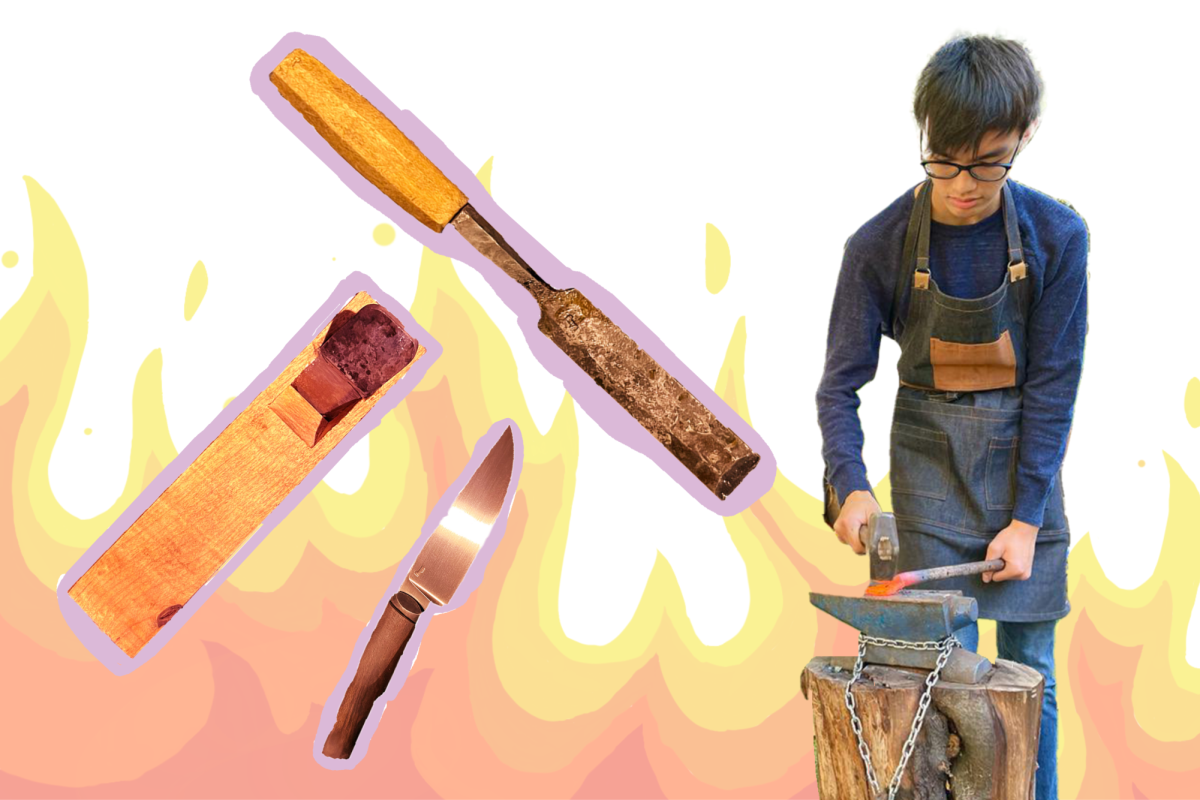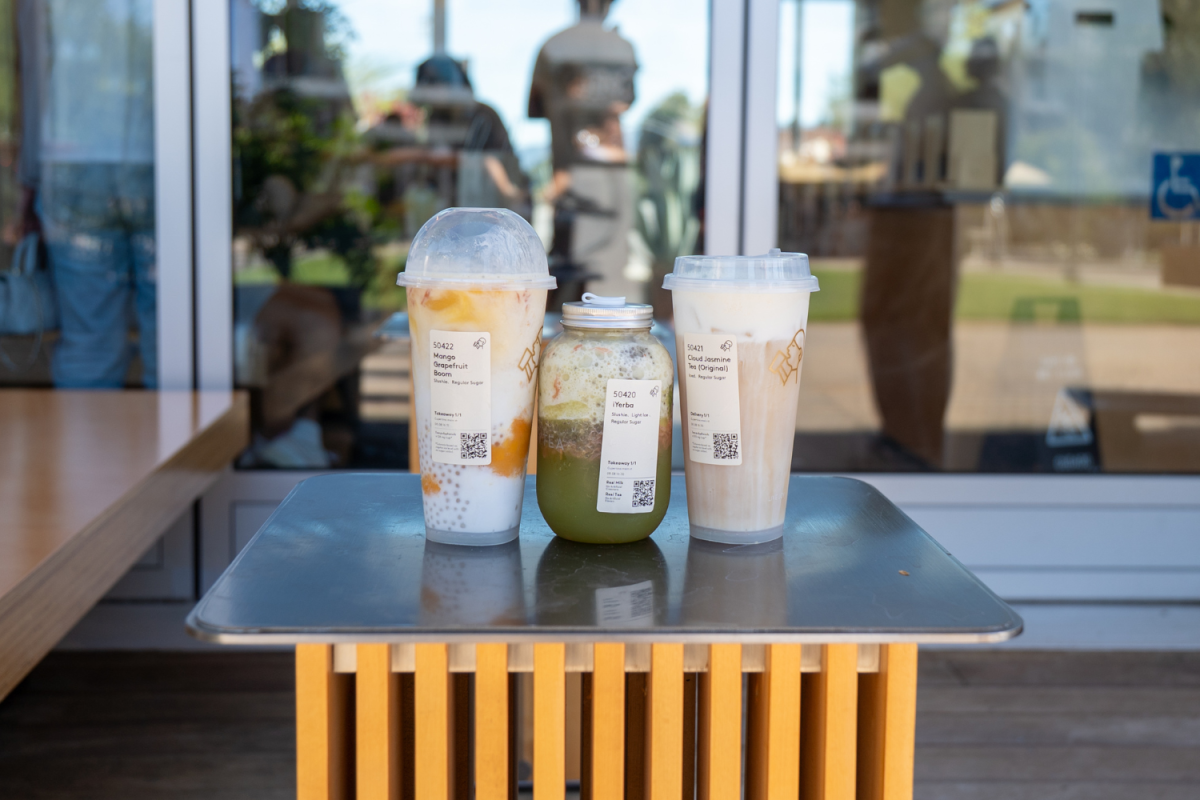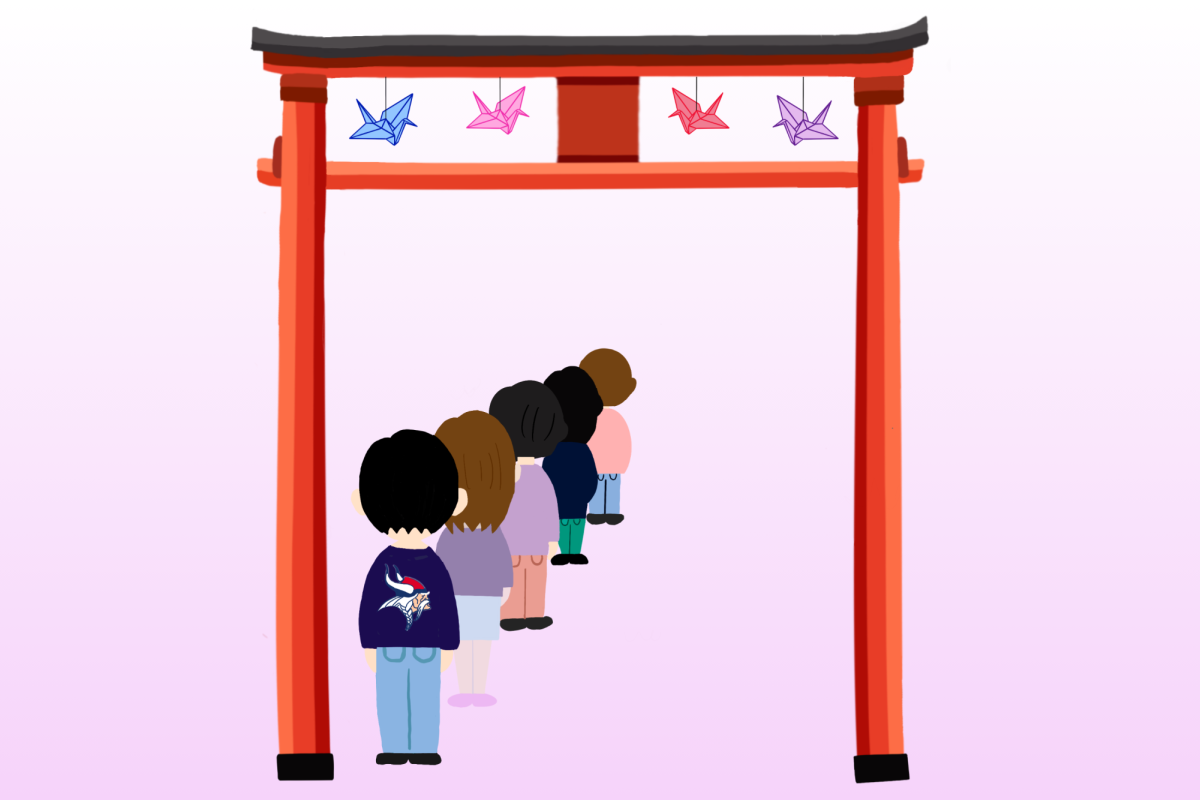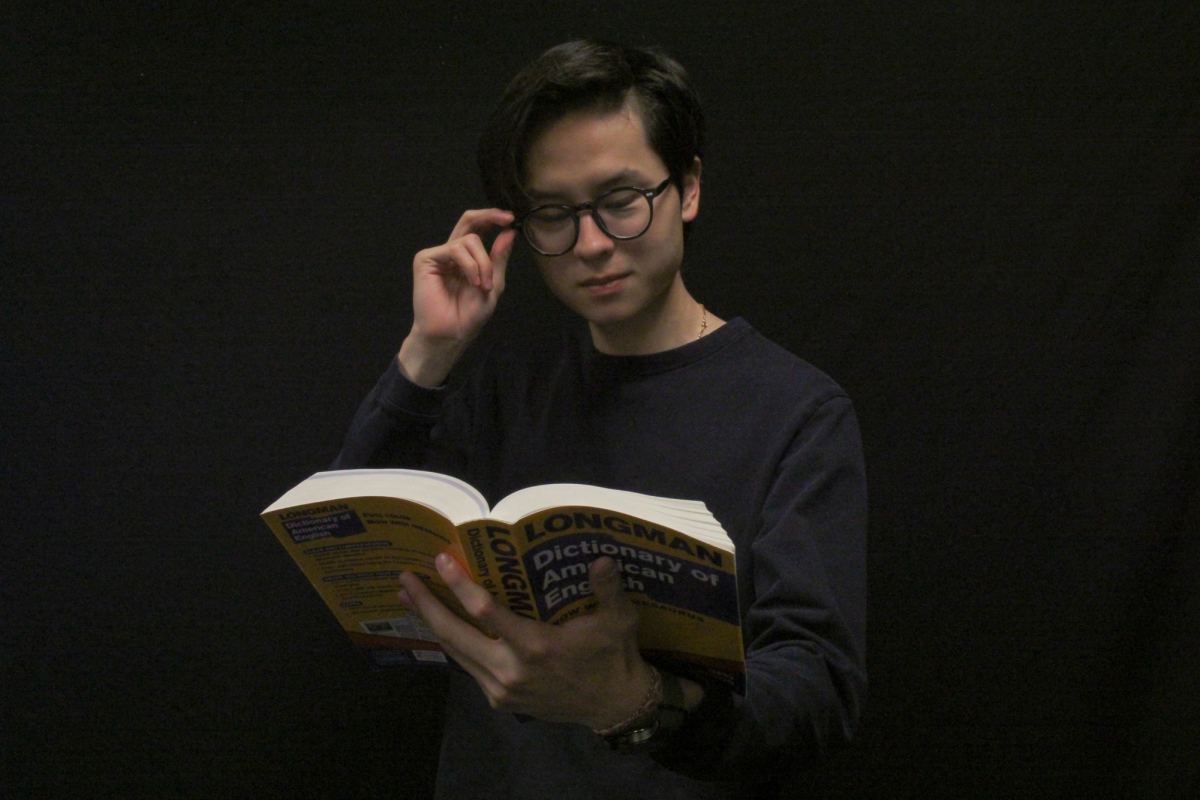Thin wisps of smoke curl upward to the sky from between the gloved hands of junior Ethan Chiu as he sits behind his blacksmith’s forge in his backyard. The melted point of silver steel, now enveloped in a red hue, slides to mold snugly around the sharpening blade. Chiu’s latest creation, a small two-inch long knife, cools on a metal rack after having taken the entire Thanksgiving break to complete.
Chiu began blacksmithing in the summer before his freshman year, inspired by beautifully crafted knives and swords from a variety of martial arts movies and reality television shows such as “Forged in Fire,” a competition series that challenges bladesmiths to recreate iconic weaponry from throughout history. An avid fan of these entertainment genres, Chiu set out to forge his first project — a miniature sword.
“At the time, I couldn’t yet make a full-size sword, so I decided to just stick to the miniatures,” Chiu said.
Because he didn’t yet have the expertise to create a full-size sword, Chiu found tutorials to craft his model sword from books and YouTube channels run by blacksmithers such as Will Stelter and Torbjörn Åhman. Chiu gathered scrap material including bars of steel from home improvement stores such as Home Depot and Harbor Freight Tools as well as his grandpa’s workshop. Both Chiu’s grandfather and father own a large variety of tools in their workshops, as they nurture an interest in construction and car repair, respectively. Chiu forged the steel using a compact, amateur forge from Amazon that he stores on an old barbecue grill, in which the metal is able to brace the heat from the forge.
“If I had put the forge on a wooden table, it would have burned down because the forge would have gotten too hot,” Chiu said. “The barbecue grill has an advantage because you can work there safely and you can cover it up when it rains, so the tools won’t get rusty.”
Blacksmithing for Chiu first involves lighting the forge — a type of hearth with a heat source and oxygen input used for heating metals — with propane and then adding steel. The forge first reaches a very red heat, the temperature at which a metal begins to glow red. At this heat, Chiu hammers out the rough shape of the tool he wants to create. As he approaches the finishing stages, he lowers the heat and hammers out any bumps to create a smoother surface.
Chiu initially built and operated a homemade forge consisting of plaster and sand inside a paint can with a tube connecting to propane. After discovering that his homemade forge functioned poorly, he upgraded to his current one. Since beginning blacksmithing, Chiu has worked on developing his technique and skill and hopes to continue to grow over the next few years.
“Before, my projects were usually smaller in scale, but they gradually got larger and more elaborate,” Chiu said. “I used to craft small tools and knives, but recently I’ve been working on woodworking tools and knives.”
In the summer following his sophomore year, Chiu spent a month crafting his Bowie knife, a classic American knife used by frontiersmen. He faced many challenges, including having to remake the guard from scratch because it was misfitted, and not being able to acquire certain required materials. However, one way he’s learned to overcome this is by forging the materials he needs to make his tools. For example, while making his chisel, he decided to fuse carbon steel to the mild steel due to not having a sufficient supply of carbon steel.
“In my opinion, the coolest part about blacksmithing is that you can make your own tools since you work with metal,” Chiu said. “Sometimes you make a tool to make a tool to make a tool.”
Chiu spends about five hours a week blacksmithing at home, carefully crafting his next project. Tools like the Bowie knife have demanded focus and determination for long periods of time due to its size and the importance of the project to him.
“I have become more disciplined, because sometimes the project takes a long time,” Chiu said. “You really can’t rush that.”
In the future, Chiu looks forward to sharing his passion for blacksmithing with other Lynbrook students by founding a blacksmithing club on campus. He and his friends, who frequently visit his house to learn about blacksmithing, hope to begin club meetings in the 2024-25 school year after finding an adviser; there, he would teach club members about blacksmithing techniques and materials as well as host forge days on the weekends for members to practice their skills.
“I think the importance of blacksmithing is mostly the mental aspect, not the physical skill,” Chiu said. “It’s more about enjoying the process of creating something from scratch rather than only focusing on the end goal.”











































































